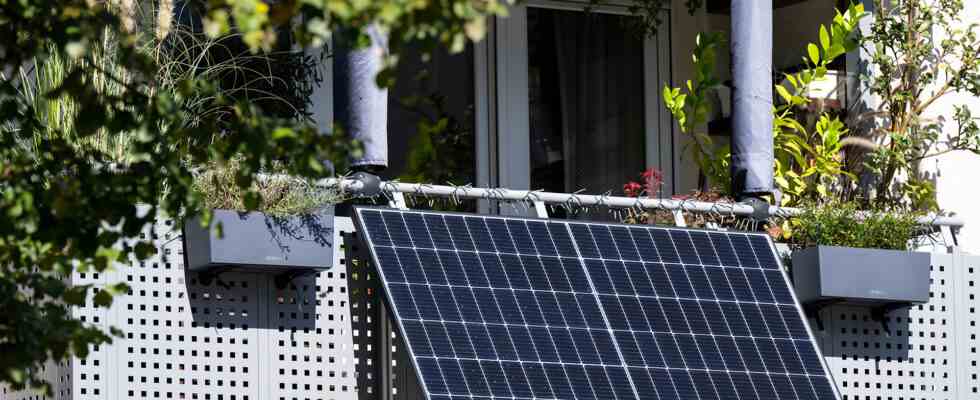Status: 02/04/2023 06:25 a.m
Private solar systems are being installed on more and more roofs. In local energy communities, sourcing electricity from neighbors could greatly reduce costs. In practice, this is hardly possible – at least in Germany.
Around 2.2 million solar systems are installed throughout Germany. Owners often use part of the self-generated electricity in their own home and feed excess electricity into the public grid. However, the state feed-in tariff has fallen noticeably in recent years: 8.2 cents per kilowatt hour (kWh) are paid for systems with a peak output of ten kilowatts. The average household price for electricity is currently around 40 cents per kWh.
Enormous potential for “energy sharing”
So why not sell surpluses to neighbors at fair prices? Or form energy communities to generate and consume electricity together? According to an analysis by the Institute for Ecological Economic Research (IÖW), the potential for so-called “energy sharing” is enormous.
According to this, energy communities could accomplish up to 35 percent of the expansion of renewable energies by the year 2030. 90 percent of all households in Germany could be supplied with electricity at reduced prices.
Consume electricity where it is generated
The client of the study, Bündnis Bürgerenergie (BBEn), describes “energy sharing” as the sharing of green electricity via the distribution grid. The basic idea is to consume the electricity where it is generated, explains Viola Theesfeld, consultant for energy policy and energy management at BBEn:
This means that the electricity would not have to be transported or stored over long distances, but everyone would directly benefit from more renewable energies in their area. Anyone who lives near such facilities would have a financial advantage.
In practice, however, it usually looks like this: the self-generated electricity can be consumed in your own house and on your own property. In the immediate vicinity, on adjacent properties, but not.
Distance is not taken into account
When it comes to transporting electricity, no distinction is made based on distance, explains expert Volker Quaschning from the University of Applied Sciences in Berlin. Transporting electricity from Flensburg to Munich costs just as much as to the other side of the street.
“As soon as the electricity goes through a meter of public cable, a lot of fees are due,” explains Quaschning. “And if you try to sell the electricity to your neighbors, then you also have the rights and obligations of an energy supplier, which becomes very complicated from a legal point of view.”
Germany lags behind
According to Theesfeld from Bündnis Bürgerenergie, this means that a lot of potential is wasted: “If I have more electricity than I need, I can’t just pass it on.” The EU issued a directive in 2018 that describes the framework conditions for “renewable energy communities”.
The member states are required to create the conditions for energy communities to be able to work economically. Energy expert Quaschning criticizes that this has not really been realized in Germany.
Already possible in Austria
The German government, on the other hand, is of the opinion that energy communities should be treated like other market participants. EU law does not provide for any “privileging” of energy communities.
But other countries are already doing it differently. Austria has set up its own coordination office for energy communities. These represent a “new milestone for the Austrian energy industry”, according to the authority. Accordingly, it is also possible in Austria what is not possible in Germany: electricity that you do not use yourself can be sold to neighbors. At a price that has been mutually agreed upon.

